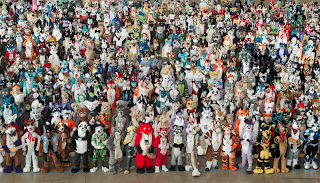Independence Day having been yesterday, we here at Vibrant Pittsburgh are in quite a nostalgic mood! Sometimes with all the hustle and bustle of a city, it's easy to get caught up in your own life and forget about the millions that have come before you and the history of the town you live. So, for our Friday blog, we’ve decided to slow it down a bit and remind you of how the great city of Pittsburgh came to be.
Once a land inhabited by Native American tribes, it wasn’t until 1669 that the first European and French explorer, Robert de La Salle, traveled down the Ohio river in exploration, subsequently discovering the land where rivers meet. Years later, this claim of discovery would become a factor of the French and Indian War in which General John Forbes would victoriously siege Fort Duquesne, order the building of Fort Pitt (named after British Secretary of State, William Pitt the Elder) and ultimately name the area between the two rivers, ‘Pittsborough’.
In the the 1768 Treaty of Fort Stanwix, William Penn’s descendents purchased western lands from Native Americans. These lands are mostly known as present day Pittsburgh. In 1769 a survey of the land between the rivers was made in what was called, the ‘Manor of Pittsburgh’. Over the next few years, both Virginia and Pennsylvania would claim Pittsburgh as their own, and it wasn’t until 1780, when both states agreed to move the Mason-Dixon Line westward, that Pittsburgh became part of Pennsylvania.
Following the American Revolution, the village of Pittsburgh continued to grow, largely basing its economy on boat manufacturing for those hoping to enter Ohio Country. It was only in 1784 that the ‘Town of Pittsburgh’ was finished being mapped out, and in the following two years Pittsburgh officially became part of Pennsylvania (1785) and the Pittsburgh Post-Gazette was founded (1786). In 1787, Pittsburgh Academy (which ultimately become the University of Pittsburgh) was founded and as the population grew, Pittsburgh began manufacturing glass in 1797.
When supplies from Britain were cut off in the War of 1812, this stimulated the growth of American manufacturing. This gave Pittsburgh the chance to become a leader in the manufacturing of iron, brass, tin and glass products. As many Welsh immigrants started settling in Pittsburgh, by the 1840’s Pittsburgh had become one of the largest cities west of the Allegheny Mountains, until 1845 when a great fire burned down thousands of Pittsburgh buildings. The city ultimately rebuilt itself and by the Civil War, Pittsburgh took its first turn into a steel town when Andrew Carnegie founded the Edgar Thomson Steel Works in North Braddock (eventually this evolved into the Carnegie Steel Company).
By 1911, Pittsburgh was the countries 8th largest city and by World War II Pittsburgh produced over 95 million tons of steel, causing a thick dark smog to engulf the city. Following the war, however, the city of Pittsburgh began its clean air project known as the “Renaissance”, which was shortly followed by the “Renaissance II” project which was meant to develop Pittsburgh’s neighborhoods culturally. In the 1980’s, Pittsburgh experienced huge layoffs in the steel industry, spiralling the city into a short lived depression, of which it climbed out of as it began to focus its economy around education, services, tourism and healthcare.
While Pittsburgh today is only half as large as it was in the 1950’s, it has economically flourished throughout the late 2000’s recession, a time when most of the country was economically struggling. In fact, between 2006 and 2011, the Pittsburgh MSA had over a 10% appreciation in housing - the largest of the top 25 MSA’s in the United States. And in 2009, President Barack Obama personally picked Pittsburgh to host the G-20 on account of its history of economic flourishment and regeneration.






